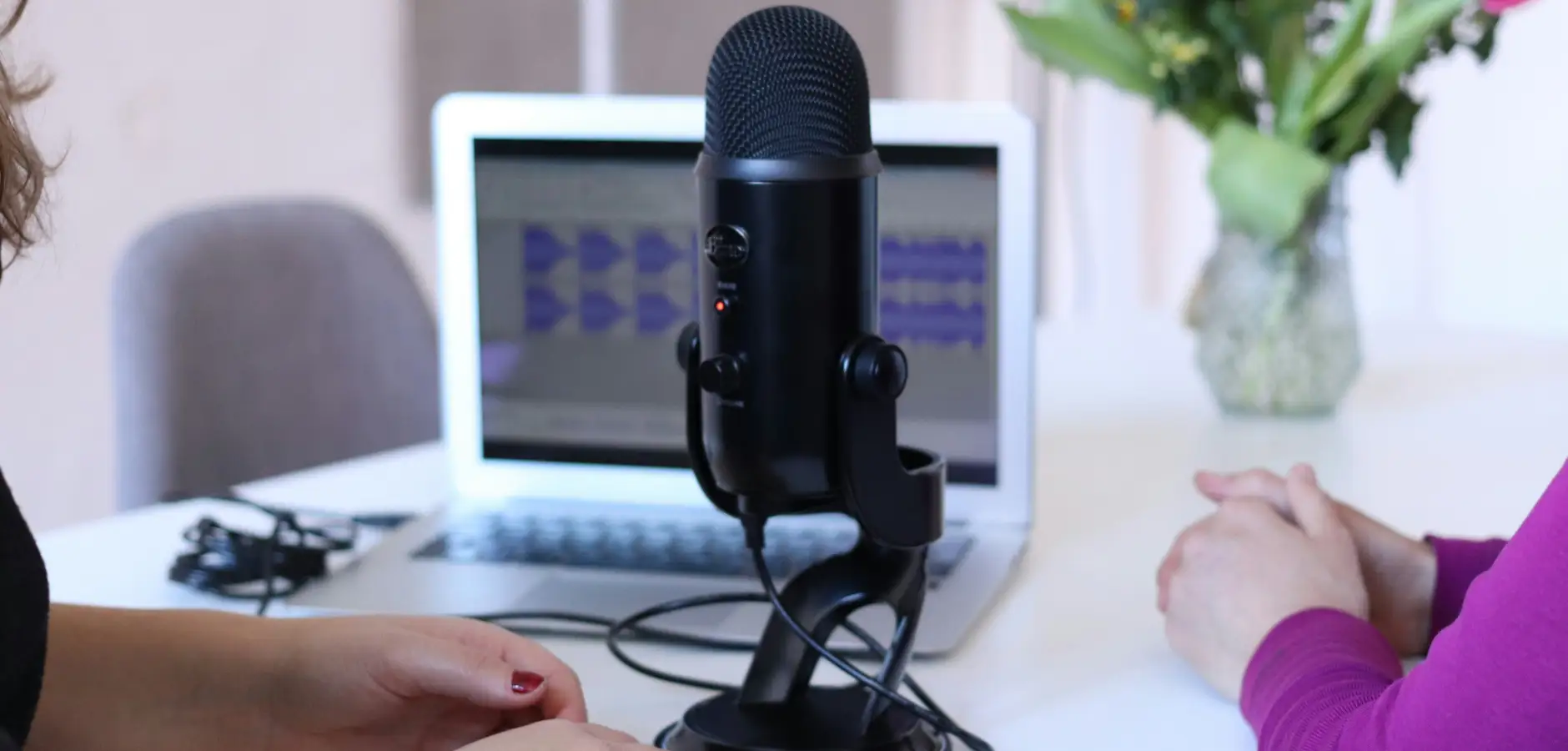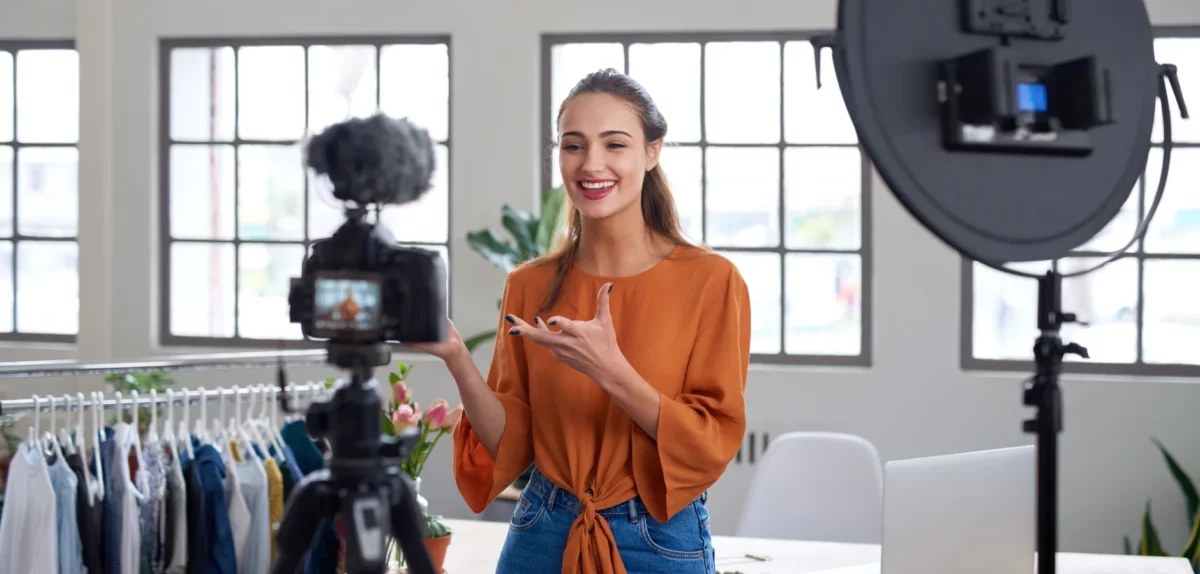Have you ever faced the sting of rejection from a brand campaign you felt hyped to work on? It’s a tough pill to swallow.
You’ve done the work, and your content is on fire, yet you get that “thanks, but no thanks” email. It’s not just a hit to your inbox but to your confidence.
Multiple factors could lead to your pitch failing to land, ranging from misaligned brand values to overlooked details.
Here are seven reasons brands might reject you from campaigns and how to turn those setbacks into comebacks.
Table of contents:
- Your creative offerings don’t align with the brand
- Your pitch wasn’t personalized
- You don’t have high engagement rates
- Your content portfolio isn’t high-quality or consistent
- You have the wrong audience demographics
- You didn’t fit the brand’s budget
- The brand didn’t communicate about the campaign well
1. Your creative offering doesn’t align with the brand (or they can’t tell it does)
Brands could overlook your pitch if your creative offerings don’t match their expectations or they can’t see your full potential.
All of your platforms should work together and connect to one another so brands can see your range of talents.
Brands seek creators who can integrate their narratives across various platforms. A disjointed online presence makes it challenging for brands to grasp what you can offer.
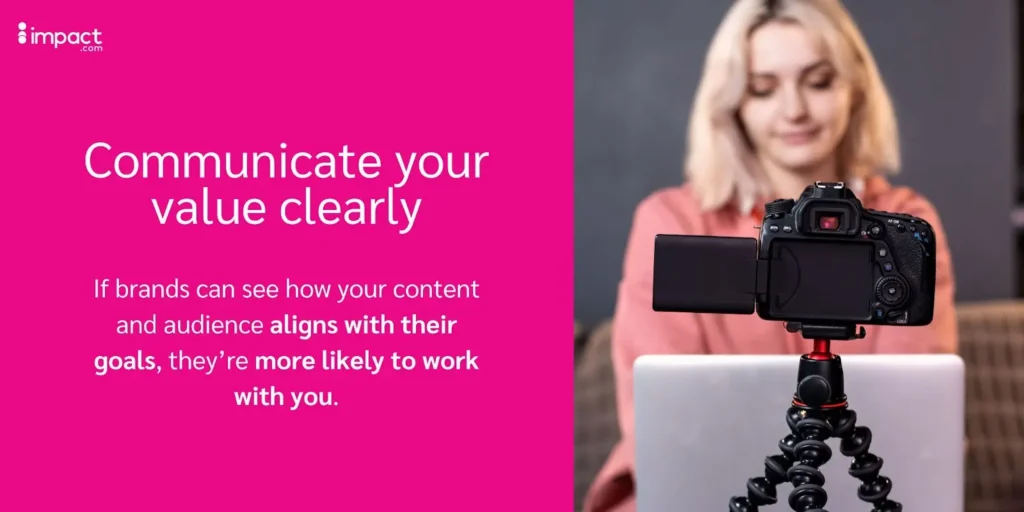
Matching your creative offering with ideal brands
Develop a comprehensive media kit: Your media kit should present your strengths, including diverse platform engagement and previous successful collaborations. It’s your opportunity to showcase your unique value. (Pro tip: Our media kit template can help you get started).
Interlink your social profiles: Cross-promote your social media accounts, helping brands easily explore the breadth of your content. It’ll help grow your audiences on each platform, too.
Optimize your marketplace listings: Treat any marketplace profile like a dating profile for collabs. Detail your capabilities and ensure all your social channels are easily accessible. This enhances your visibility and attractiveness to potential brand partners. Learn more about how to optimize your impact.com Marketplace listing.
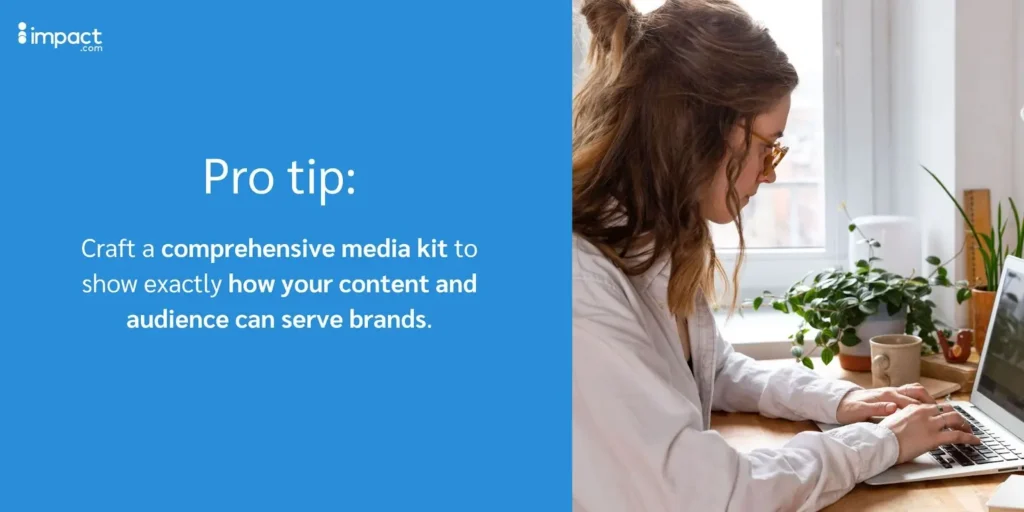
2. Your pitch wasn’t personalized to the brand
In a sea of copy-paste pitches, standing out requires a tailored approach. Brands have a keen eye for authenticity and can quickly identify when a pitch lacks a personal touch.
Generic pitches are a missed opportunity to connect. Brands look for creators with a genuine affinity for their products or ethos. Our research reveals that 83% of brands view a deep love and understanding of their brand as a critical factor in forming successful partnerships.

Source: What brands want: building successful creator partnerships in 2023
Brands say finding the right creator was their top challenge when working with influencers. So highlight what makes you an excellent fit for them.
A personalized pitch signals that you’ve done your homework, understand the brand’s vision, and are ready to create content that aligns with their goals. It also shows your willingness to go the extra mile, suggesting you’ll be a reliable collaborator.
How to craft a personalized pitch
Research is vital: Before drafting your pitch, dive into the brand’s recent campaigns, target audience, and company values. This will help you articulate how your content can complement their marketing strategy.
Reflect on brand guidelines: If the brand has public guidelines for campaigns or collabs, adapt your pitch accordingly. This shows you get their brand identity and can collaborate within their framework.
Articulate your unique value: In your pitch email, clearly express how your unique style or audience could offer a new dimension to their marketing efforts. Be specific about how you see a partnership unfolding.
3. You don’t have a high enough engagement rate on your content
A large follower count doesn’t pack the punch it used to. Brands crave evidence that your followers are more than a number—they’re a lively, interactive community.
Picture this: you have 100,000 followers, but your Stories only muster 100 views.
To brands, this discrepancy raises red flags about your content’s impact and your audience’s investment in your narrative.
Beyond in-feed posts, focus on other content types that require quick engagement, including live streams and Stories. High engagement here will prove that your followers aren’t just bots.
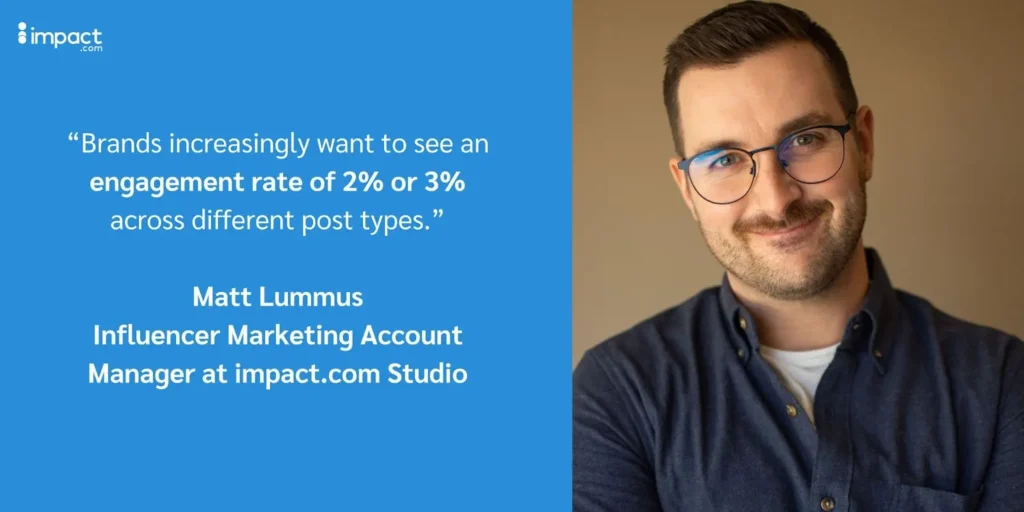
See how impact.com’s Studio provides strategic influencer program management to brands.
Elevating your engagement game
Quality over quantity: Focus on crafting content that speaks to your audience’s interests and needs. High-quality, relatable posts will spark conversations, shares, and saves.
Connect authentically: Engagement is a two-way street. Make your followers feel seen by responding to comments, sliding into DMs with genuine replies, and inviting discussion through interactive captions or polls in your Stories.
Get creative with giveaways: Who doesn’t love freebies? Organize giveaways encouraging followers to engage with your content, such as tagging friends, sharing your post, or reacting to a series of Stories.
Diversify your content: Don’t put all your eggs in one basket. Experiment with different content types across posts, Stories, Reels, and IGTV. See which formats drive the most buzz and lean into those.
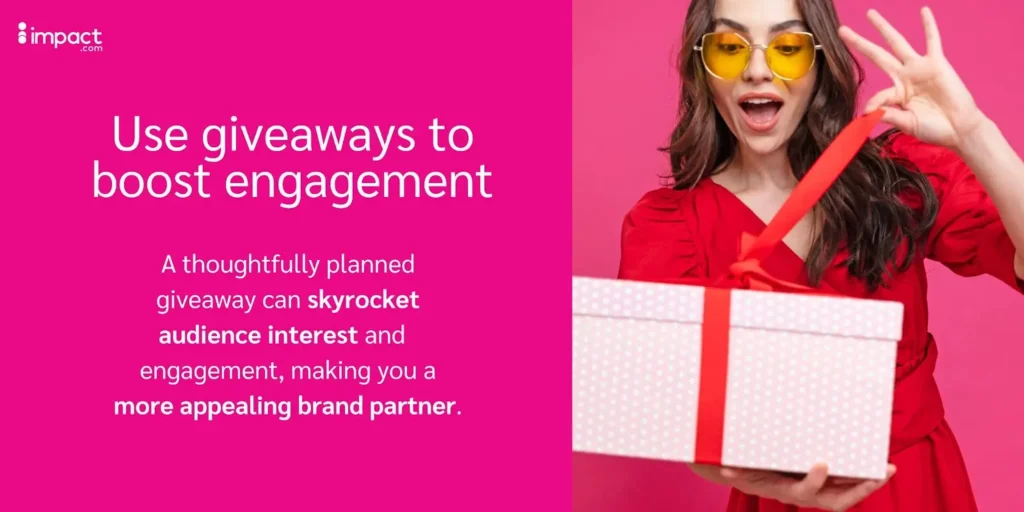
4. Your content portfolio isn’t high-quality or consistent
Brands love consistency. They want to see you’re dedicated to your craft and posting regularly. If you only show up once a month, it’s like telling potential brand partners that you’ve got commitment issues.
Sharing top-notch content on a steady schedule nurtures an engaged audience, which can lead to more interest from brand partners.
It also shows that you can consistently produce great work—giving the brand confidence that they’ll receive high-quality deliverables when they work with you.
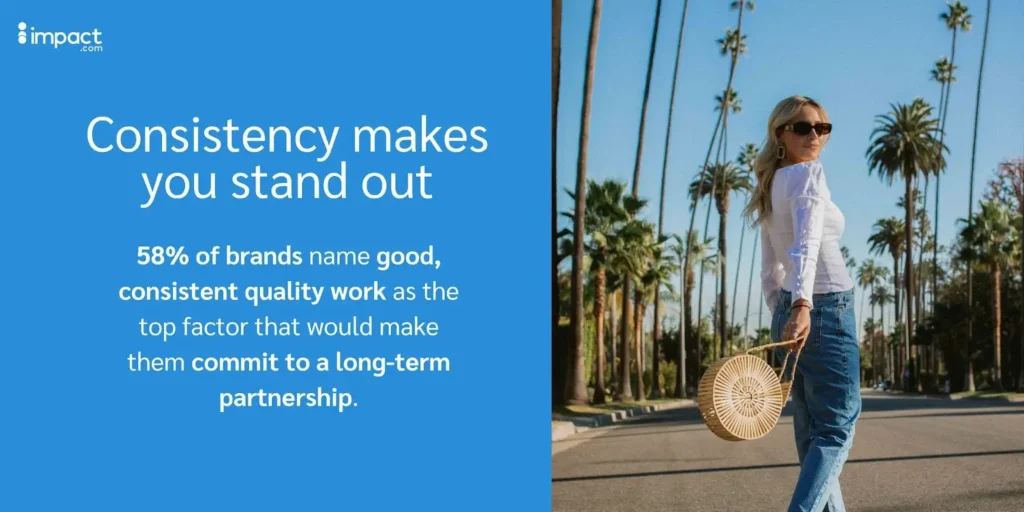
Source: What brands want: building successful creator partnerships in 2023
Sharing high-quality content regularly
Prioritize high-quality content: Before hitting ‘publish,’ ask yourself, “Is this my best work?” If the answer is no, it might be worth stepping back and refining it. Remember, one outstanding post can have more impact than ten mediocre ones.
Create a realistic content calendar: Planning is your best friend. Map out your content in advance with a content calendar. This will help you stay organized, ensure consistency, and give you the time to focus on quality.
Focus on community building: Brands consider how you interact with your followers. Regular engagement shows that you’re not just posting content but also building a community.
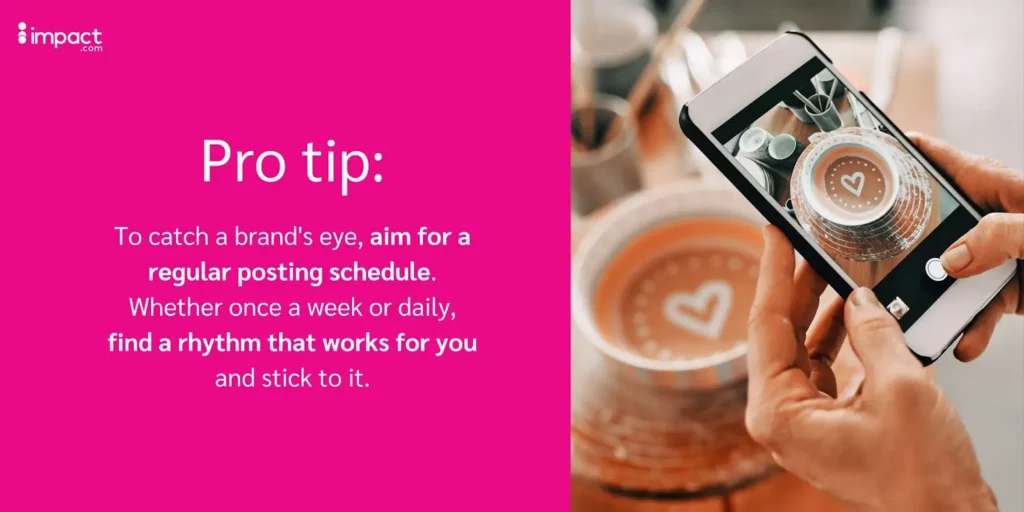
5. You have the wrong audience demographics for a campaign
Brands want to get in front of the right audience. So, they want to see that your audience matches their target audience demographics. These include:
- Gender
- Location
- Job title
- Age group
- Interests
For example, a brand that sells women’s skincare may prefer creators with a predominantly female audience over age 40 and disposable income.
Matching your audience demographics with the right brands and fostering an engaged community will increase your chances of being accepted for brand campaigns. The golden thread is consistent engagement despite your follower count.
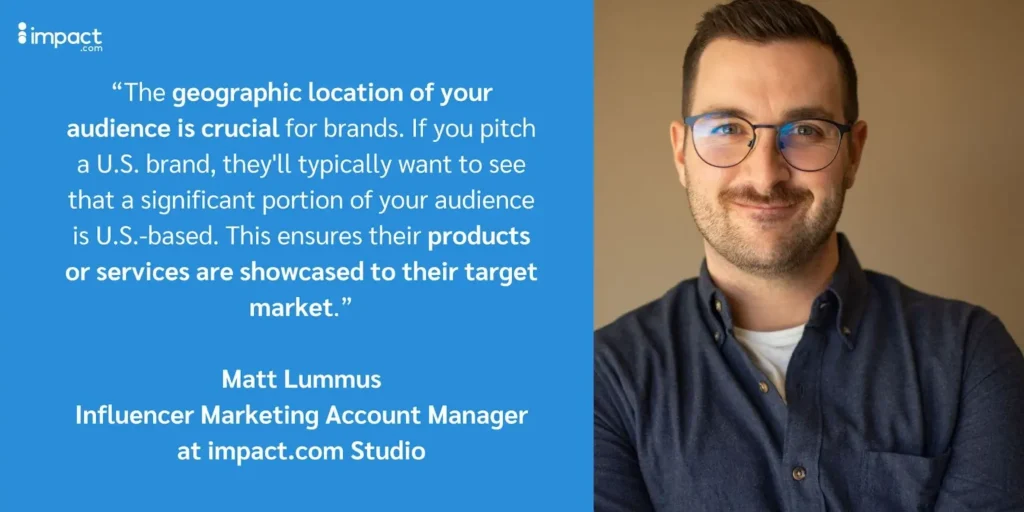
Learn more about how impact.com’s Studio offers strategic influencer program management to brands.
Building the right audience engagement
Analyze your audience: Dive into your analytics to understand the demographics of your followers. Look at factors such as age, gender, and location. As you grow, continue to check on how your audience demographics evolve.
Target the right brands: Once you have a clear picture of your audience demographics, pitch to brands that sync with your audience. For example, if your followers are mostly young women in the United States, look for brands that cater to that group.
Share your audience demographics with brands: Add them to your media kit and rate card. When pitching, highlight your audience to show why they’d love content from that brand.
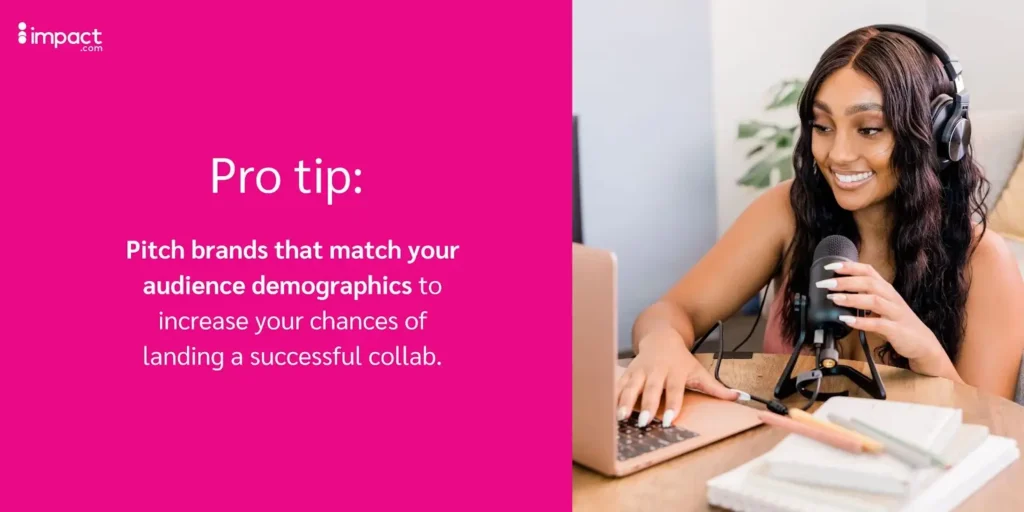
6. You didn’t fit the brand’s budget
Pricing your services as a creator can be tricky. You want to be compensated fairly for your hard work and creativity. But you also need to be mindful of the brand’s budget constraints.
Sometimes, creators overprice themselves, or there may be a poor fit between what you’re asking for and what the brand is willing to spend.
It’s also important to consider the size of the brand. Smaller brands or startups might have limited budgets and can’t afford the rates that more established creators command. This doesn’t mean you should undervalue your work, but it’s something to keep in mind when pitching to brand types.
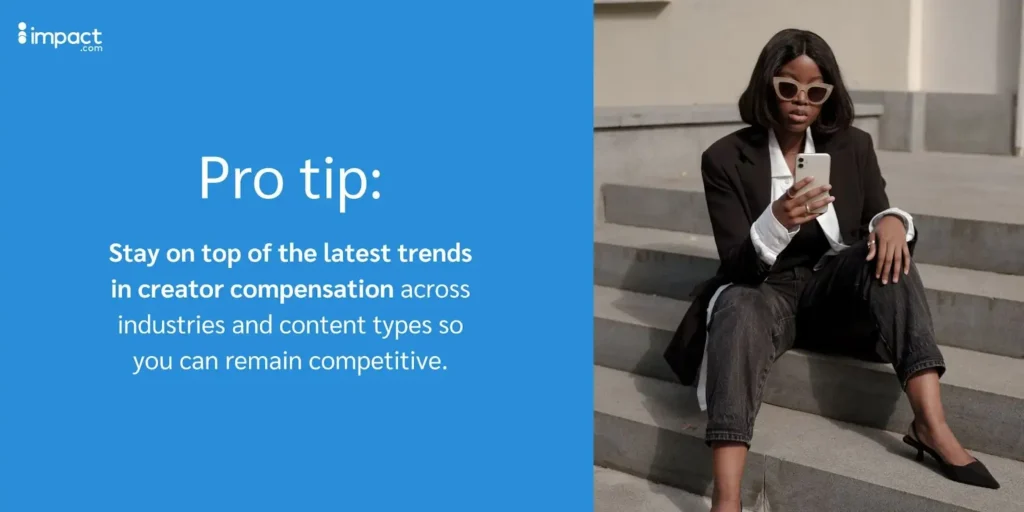
Matching target brand budgets
Research market conditions: Stay informed about the current market rates for creators in your niche so you can set competitive yet fair prices for your services.
Seek feedback: Get feedback on your rates from peers or industry pros. This can give you a better idea of whether your pricing aligns with market standards.
Target brands within your budget range: Aim to collab with brands that are more likely to have the budget for your rates, which may mean targeting larger brands or those in industries known for higher marketing budgets. If the brand’s budget isn’t clear, try chatting with other influencers who worked with the brand.
Be flexible: While it’s important to know your worth, sometimes being flexible with your rates can open doors to valuable opportunities—especially if it’s a brand you’re excited to work with. You could also pitch other, more affordable partnership types, such as affiliate or brand ambassadorship.
Use marketplaces: Platforms such as the impact.com Marketplace can be a great way to connect with brands of all sizes. These marketplaces often provide insights into budget ranges, helping you find opportunities that fit your rates.
7. The brand didn’t communicate about their campaign well
Brands often have specific requirements or a particular vibe in mind for their campaigns. For example, they might be looking for creators who are single moms, avid travelers, or passionate about sustainability.
But, they might not always communicate these expectations clearly, leaving creators wondering why they weren’t the right fit.
It’s also important to remember that not being selected for a campaign doesn’t necessarily mean you’re not a match for the brand overall. Sometimes, it’s just about timing and the specific needs of that particular campaign. Campaigns tend to be more targeted and short-term, whereas programs are ongoing and might have more flexibility.
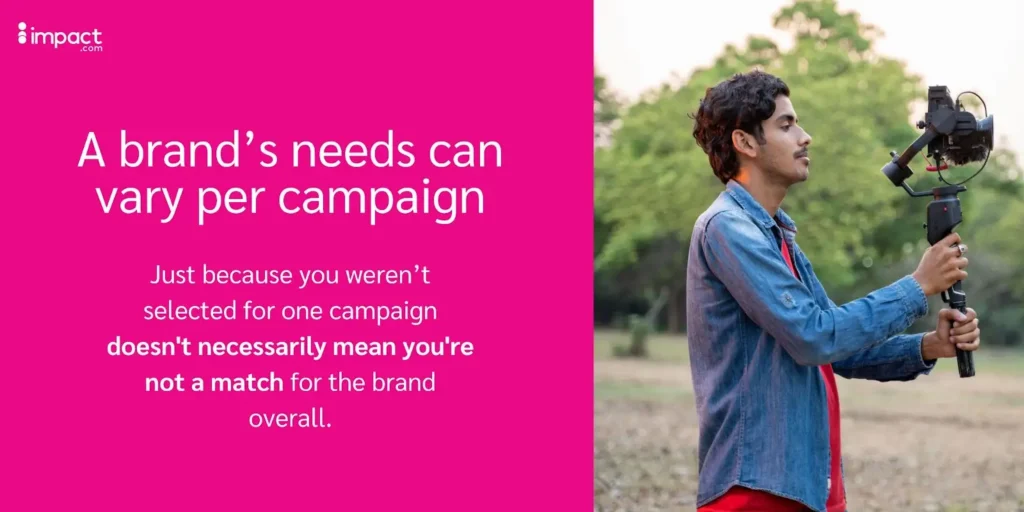
Understanding brand requirements
Do your homework: Gather as much information as possible about the brand’s campaign requirements before pitching. Look for clues from their previous campaigns, social media posts, or collabs with other creators.
Be patient: Don’t take rejection as final. Keep the lines of communication open with the brand, as you might be a perfect fit for their next program or a future campaign.
Stay true to yourself: While aligning with a brand’s requirements is important, ensure you’re not compromising your values or authenticity. The right brand partnerships should feel natural and mutually beneficial, bolstering your personal brand.
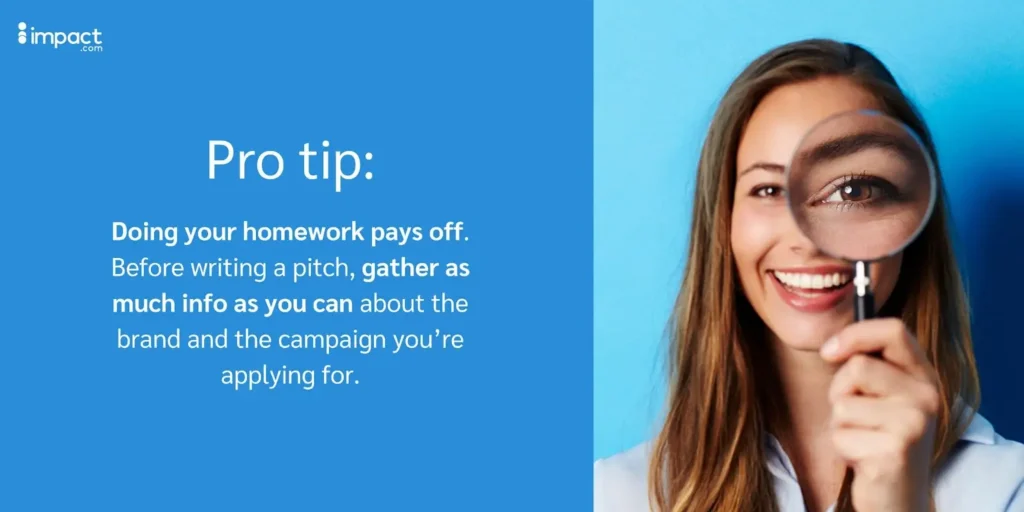
Turn your collab rejections into comebacks
Creators who don’t give up after rejection have the best chance of building successful brand partnerships. Use rejection as an opportunity for growth instead of letting it bring you down.
Start by curating your content and media kit to match brands on your dream list. Then, pitch brands whose values resonate with your content and audience.
Want to find brands ready for collabs? Sign up for impact.com / Creator to discover brands that want to hear from creators like you.
Continue discovering more business strategies with these resources:
